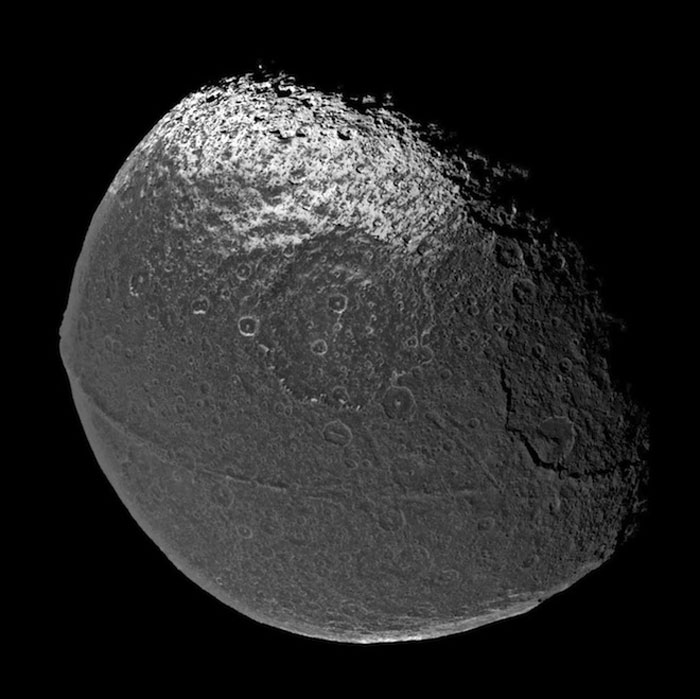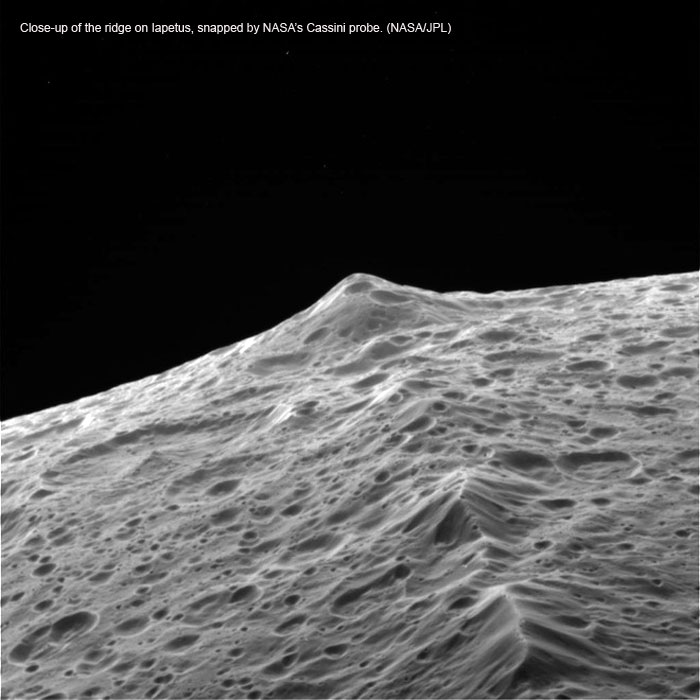-

Iapetus, one of Saturn’s weirdest moons, has an enormous equatorial mountain ridge, a spiky belt that rises 12 miles above the moon’s surface. How Iapetus built that belt – the only one of its kind ever observed – has been a persistent conundrum.
Now, scientists suggest that a giant impact early in Iapetus’ history knocked the moon around, dramatically slowing its rotation rate and deforming its crust. After 1 million years, Iapetus began to resemble the walnut-shaped satellite it is today: flatter at the poles, and with a ridge extending most of the way around its middle, suggested planetary scientist Gabriel Tobie of France’s University of Nantes here at the American Geophysical Union conference Dec. 4.
Earlier ideas describing the birth of the Iapetian belt invoke tectonic activity within the moon itself, or the brief presence of a impact-produced satellite – a smaller body that wandered too close to Iapetus and was shredded, briefly forming a ring that disintegrated over the moon’s equator.
Tobie and his colleagues simulated the Iapetian early years and came up with a different story. Shortly after it formed, Iapetus spun around itself once every six hours or so. But after about 10 million years of unperturbed rotation, an object between 500 and 650 miles wide zoomed in and face-planted on the moon.
The collision disrupted the moon’s rotation rate, immediately slowing it to more than 30 hours per pirouette. Such rapid braking stretched and deformed the moon’s crust, flattening its poles and pinching the ridge around its middle, Tobie demonstrated in a 3-D simulation. “It is possible for a single impact to change the rotation of Iapetus,” he said, noting a 500-mile-wide crater that could be a scar left over from the collision. “We can generate a ridge only if the body rotates very, very fast initially.”
While the theory is intriguing, some scientists at the presentation were skeptical, suggesting that it might not be as easy to despin the moon as suggested, and that the simulation may not have gotten Iapetus’ interior quite right. Another persistent mystery is the fact that the ridge isn’t wrapped all the way around the moon.
Like the rest of the theories, this newest idea can’t answer those questions, yet.
-

-
Quelle: NASA
6502 Views
